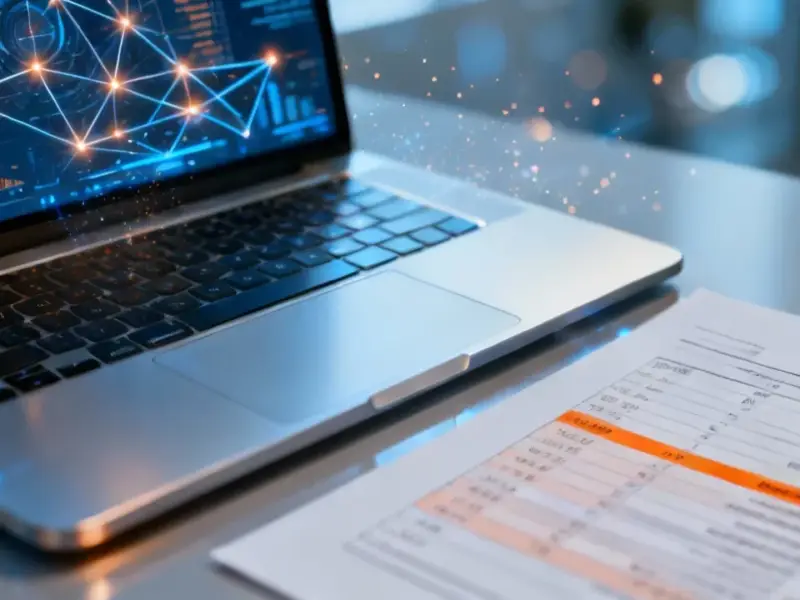According to Fortune, Nvidia’s Jensen Huang says we’re not in an AI bubble while Amazon’s Jeff Bezos and OpenAI’s Sam Altman believe we probably are, with Altman warning that some investors “are likely to lose a lot of money.” The S&P 500 has risen 14.7% this year with 40% of its value coming from just 10 stocks, mostly tech companies pouring billions into AI infrastructure. Goldman Sachs estimates AI capital expenditure will hit $390 billion this year while Bank of America projects it reaching $1.2 trillion by 2030. OpenAI, valued at $500 billion by investors, reportedly lost $12 billion in Q3 2025 alone while committing to spend $1.4 trillion on development despite disclosing just $13 billion in 2025 revenues. U.S. stocks now account for about 60% of global stock valuation with tech representing 45% of that, creating what analysts describe as an “upside-down pyramid” of global asset concentration.
The bubble math doesn’t add up
Here’s the thing that keeps economists up at night: we’re looking at $400 billion in annual AI capex from S&P 500 companies chasing revenues that currently amount to pocket change by comparison. OpenAI’s situation is particularly wild – they’re valued at half a trillion dollars while burning through cash at an astonishing rate. And Microsoft’s disclosure about their $12 billion quarterly loss? That’s not just a red flag, that’s a five-alarm fire.
What’s really concerning is how circular this whole ecosystem has become. Morgan Stanley calls out these “increasingly circular” relationships where the same handful of companies – Nvidia, Microsoft, OpenAI, Oracle, CoreWeave, AMD – keep passing money back and forth through equity stakes, revenue sharing, and vendor financing. It’s starting to feel like musical chairs, and everyone’s wondering what happens when the music stops.
Unprecedented market concentration
We’ve never seen this level of concentration in global markets before. Think about it: U.S. stocks now represent 60% of global market valuation, and nearly half of that is tech. Basically, the entire world’s investable assets are balanced on the performance of maybe seven companies. And regular investors buying S&P 500 ETFs thinking they’re diversified? They’re essentially making a concentrated bet on Big Tech’s AI dreams.
The Russell 2000 situation is even crazier. About 40% of those small-cap companies have no earnings or negative earnings – and get this, the unprofitable ones are outperforming the profitable ones this year. That’s pure narrative-driven investing, and it’s all riding on AI hype. When sentiment shifts, and it always does, the fallout could be brutal across market caps.
Why this matters globally
This isn’t just a Wall Street problem. Goldman Sachs’ Christian Mueller-Glissmann points out that this concentration makes sense in some ways – the U.S. has more “financialization” where companies can scale revenues without proportional cost increases. An app with 200 million users doesn’t cost twice as much to run as one with 100 million users, unlike traditional businesses. But that efficiency comes with fragility.
Morgan Stanley’s Lisa Shalett thinks we’re due for a “great rebalancing” where American exceptionalism in markets unwinds over the next 5-10 years. She argues that since 2008, U.S. outperformance has been “supercharged” by zero interest rates, massive fiscal stimulus, and globalization benefits from having the world’s reserve currency. Those tailwinds are fading just as AI needs to prove its worth.
The coming reality check
So when does the bubble pop? Nobody knows exactly, but the signs are everywhere. Bank of America expects annual AI investments to keep growing through 2026, so the party might have a couple years left. But Shalett’s “show me the money” moment is approaching fast. Investors have been pricing in future AI benefits while ignoring troubling economic indicators – rising tariffs, persistent inflation, bond market pressure on U.S. fiscal policy.
The scary part? If AI reality doesn’t match the hype, the reckoning won’t be limited to tech stocks. With global wealth so concentrated in U.S. equities, and U.S. equities so dependent on tech, and tech so dependent on AI delivering returns… well, you see the domino effect. We’re basically all along for the ride whether we invested in AI or not. And that inverted pyramid Mueller-Glissmann described? It’s looking pretty wobbly.




